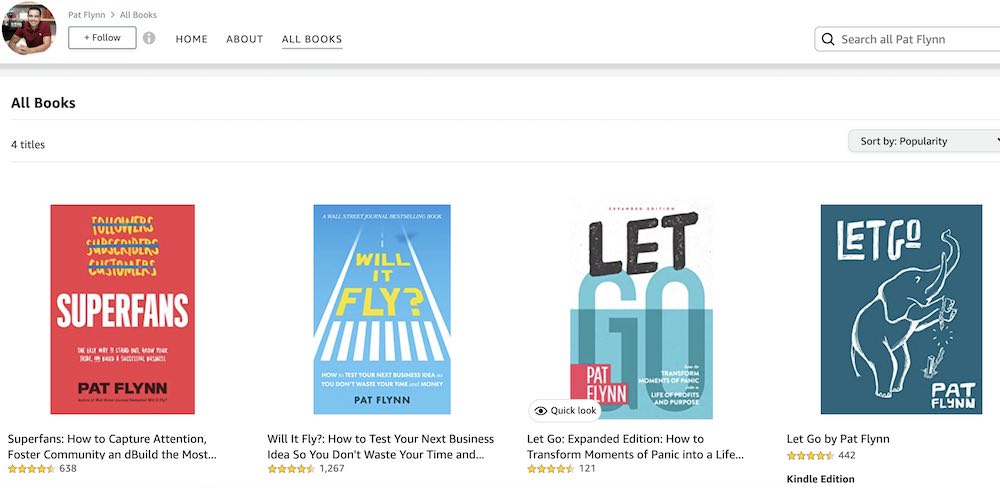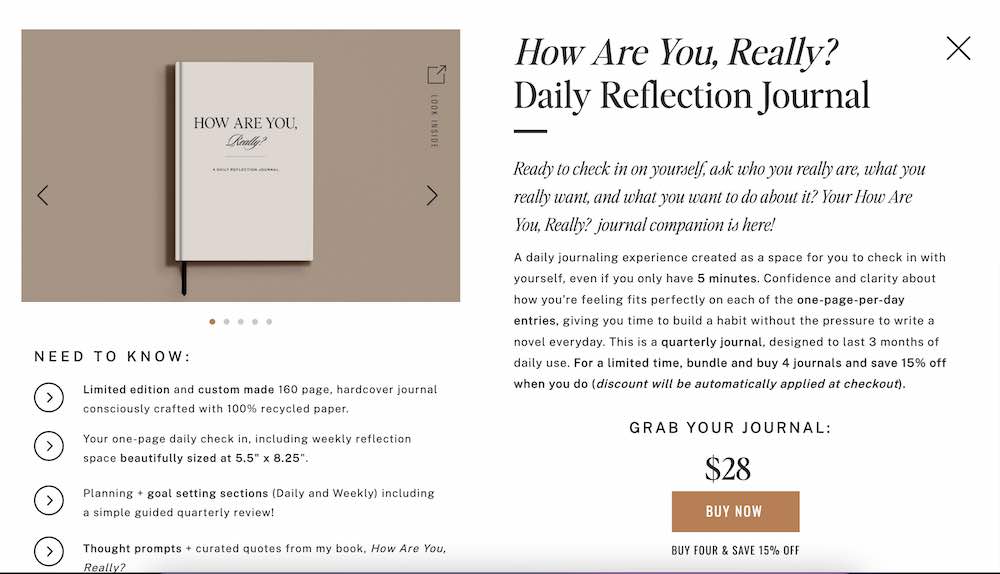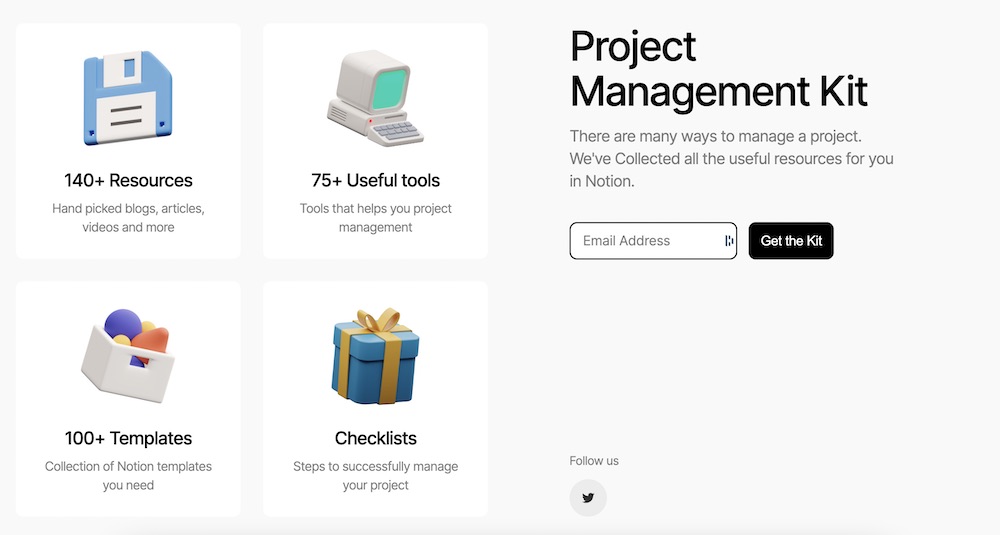Digital products come in many different forms from ebooks and lead magnets to templates and checklists. Selling digital products is attractive to creators because of their lucrative potential and convenience for customers, as they are easy to access, easy to consume and a way for customers to take immediate action. Also, the creator economy, which is valued at more than $100 billion and estimated to double by 2027, is here to stay. One easy and lucrative way to tap into the creator economy is by offering digital products.
What is a digital product?
A digital product is anything you can make and distribute online. Digital products aren't physical products but they can become physical products as customers have the option to print some forms. For the most part, digital products are intangible items. For example, a Notion template is a digital product. You can’t hold it in your hands but it has value and exists electronically. Examples of digital products range from software and online courses to streaming music and TV.
Why sell digital products
There are a number of reasons why you should create digital products to sell. Here are four of the most important ones.
1. Digital products do not require inventory to store
One of the biggest perks of selling digital products over physical products is that there’s no inventory to store. If you sell physical products, you may need to pay for a space to store them before potential customers buy them.
With digital products, you don’t have the same issue. Not only does this save you space, but it also makes it easier to work from wherever. You don’t have to spend time or money shipping items, and it’s better for the environment.
2. Digital products are a low investment
Selling digital products, such as digital files or digital downloads, on an ecommerce platform requires a fairly low investment. You can make money selling digital products, without the startup costs or risks that come with physical products.
Often, you can start selling online for free. Your main investment is your time. If you’ve got the time, then you can create digital products to sell. Simply investing your time can lead to a huge return on investment, as the digital product you create once can be purchased by customers indefinitely.
3. Digital products can generate passive income
Once you’ve created a digital product, it can generate passive income for years to come. A business generating passive income is a low lift, as it doesn’t require a ton of daily maintenance work on your part. Even with little daily effort, the payoff has the potential to be huge.
The same way James Patterson or J.K. Rowling earns royalties or residuals years after writing a book or making a film, you can continue earning money on the digital product you create years later. After creating and automating your content, you can focus on promoting your product or making new ones that customers request.
4. Digital products complement online courses
Another reason to sell digital products is that they are easy to add to online courses. With Teachable, digital downloads are a built-in feature. When you create a course with Teachable, you can also create coaching services and digital products at the same time.
4. Digital products are convenient for customers
Whether an automated delivery of a downloadable item or library of content, or online services, such as coaching, digital products are appealing to customers because they can be accessed anywhere. In fact, Forbes recently found that $54 billion is spent on digital goods annually, with the figure expected to grow by $74 billion in 2025.
{{digitaldownload-component="/blog-shortcodes/blog-popup"}}
Digital products to sell online
There are many possibilities when it comes to creating a digital product. We’ve compiled a list of the most profitable with examples and guidance to help you create your own.
1. Courses
Market research projects that the online learning industry will generate $325 billion in revenue by 2025. If you’re not already selling online courses, this is your sign to get started. An online course is one of the best digital products to sell online because you get to share what you’re passionate about.
You don’t need to be an expert or have a degree in something to be able to make a course and share your knowledge. People create courses on everything from baking bread to investing. Most importantly, they find enjoyment and success in doing so.
For example, Mark Dawson’s Self-Publishing Formula courses have generated over $1.45 million in sales and helped thousands of aspiring writers.

2. Ebooks
Another type of digital product to sell if you’ve got a passion or expertise is an ebook. You can create an ebook that people can buy, download, and read online. If you use Teachable, you can now add and sell your ebook from your Teachable school.
An ebook can be as little as 5,000 words to a few hundred pages. How much you write is up to you. Many authors start publishing bestselling ebooks on Amazon first, before working with a publisher. For example, Pat Flynn of Side Hustle School has published several ebooks through Amazon.

3. Digital workbooks
In addition to ebooks, you can offer workbooks. They are similar to ebooks but are more interactive. Examples of digital workbooks include:
- Fitness trackers
- Planner printables
- Daily journals
- Bookkeeping workbooks
- Dream journals
- Coloring books
- Painting guides
These are a small sample of digital workbooks you can create. Jenna Kutcher of the Goal Digger Podcast sells a daily reflection journal as a physical product. It can be easily sold as a digital product. Customers could print the pages or write in the journal online.

4. Guides
Feel like you’ve figured out the key to success in your field? Write a guide on it.
Guides focus on how to recreate a process, step-by-step. You can look at them like mini-courses in written form. They can package together templates, visuals, tools, and expert advice.
Here are a few examples of guides that you can create:
- Consumer guides
- Tourist and travel guides
- Gift guides
- Career guides
- A guide of 100-300 resources and tools for a specific profession or industry (example Project Management guide)

Some creators monetize guides, while others use them as a free lead magnet. Determine what your goal is before creating a guide. For example, if your goal is to build your email list, then offer the guide for free.
5. Digital files
Digital files include digital art that you can sell online. Your customers can choose what size they want to print or add other customization.
Here are examples of digital products that you can sell.
- Graphics and illustrations (PNG, SVG, etc.)
- Card and invitation designs
- Digital art prints and printables
- Music
- Videos
Remember, if you already use or sign up for Teachable, you can offer ebooks, guides, digital files, and more. It’s as simple as adding a course of coaching service on Teachable. Here’s a step-by-step guide that walks you through how to upload downloadable products.
{{firstdigital-component="/blog-shortcodes/blog-popup"}}
6. Coaching
While coaching isn’t quite a downloadable product, it’s still a digital product. You can offer your coaching services either as a group or individual coaching.
The ability to coach online has created millions of opportunities for people to connect with coaches who can meet their needs. It has also helped coaches find the right clients too. An example is Luisa Zhou’s business coaching services. Luisa is an entrepreneur and investor that mentors others on how to run and grow their online businesses.

Online coaching is a digital product that Teachable can help you easily set up and offer. Each free account can create and sell one coaching product.

When you sign up for a paid Teachable account, you can offer unlimited types of coaching. For example, a career coach might have multiple products. One may be a one-hour interview preparation session for job seekers. Another may be a more general 30-minute session for clients that aren’t sure what career coaching needs they have yet.
By offering more than one, you can reach new audiences and add another stream of revenue.
7. Access to a membership site
Selling access to a membership site is a great digital product to sell. One of the major benefits of memberships, , for instance a premium content library, is that they offer recurring revenue. Unlike a one-time purchase, subscription-based memberships can generate revenue for you each month. The key to successful memberships is to build a community first.
Then, whatever you want to make “member exclusive” could be part of the membership too. It can include access to a community or to gated content. Tech Ladies, a job board and community of over 100,000 women in tech, has free and paid memberships. Paid subscribers get access to exclusive features and benefits. Their founding membership paid offering includes exclusive perks like a private networking community and members-only events.

With Teachable, you can offer exclusive members-only access to digital products like content or coaching.
8. Podcast
A podcast where you speak with experts and share your own insights is another digital product idea. You don’t need a ton of equipment to create a podcast so it’s a low risk that could have a high reward. Podcasts are another example of content you can gate or make member exclusive.
There are other ways to monetize podcasts too. Many will sell ad spots and get revenue from brand sponsors. Finance expert Tiffany Aliche of The Budgetnista also hosts a podcast called Brown Ambition. The podcast episodes sometimes feature ads for companies in financial services, since that is Tiffany’s niche.

9. Music and audio
Like podcasting, you might be able to sell your music or audio online. Most businesses and influencers need music to use in ads and social media posts. Consider selling stock music or audio access as a digital product.
Marketplaces like Envato Elements make it easy to upload and sell audio, including sound effects, meditation music, songs, and more.
10. Newsletter access
You’ve got information to share. Why not put it in a newsletter and offer it as a digital product to sell? Your customers and audience want to hear from you and you can create a monthly or weekly newsletter to connect with them. If you want to make your newsletter gated content, you can use a platform like Substack or Beehiv.

11. Graphic design templates
Anything can be a lucrative digital product to sell if it makes other people’s lives and jobs easier. Graphic design templates are great digital products. They make it easy for others to buy and edit or customize for their own needs. For instance, many designers monetize their graphic design templates on Canva.
Canva compensates creators by paying them either 35% of every content license purchase or a percentage of royalties from subscriptions. To have more control over how your design templates are sold (and get more of the sales revenue), offer digital downloads on your website.

You can create design templates for anything. The possibilities are limitless, but these ideas will get you started.
- Logos
- YouTube thumbnails
- Brand book guidelines
- Restaurant menus
- Mood boards
- Posters and flyers
- Product packaging mockups
- Business cards
12. Photography and digital art
Your photos could be the art someone else frames and features in their home or office space. Offer your photos online as a digital product for download.
You can use photos to promote on social media too. High-quality images grab attention and draw in new followers and potential customers. Some stock photo sites also pay you for your photography, , which can be another form of licensed digital content. This means that not only would customers pay for your artwork, they would have the right to reuse it.
Like photography, your digital art could be perfect for someone’s space. Selling it online as a digital product could get them the art they’ve been looking for, and you a little extra cash in your bank account.
13. Resume review and templates
For career coaches, resume reviews and templates are invaluable digital products. Resumes are easy to create even for those who don’t have a lot of design experience. They also showcase your skills and knowledge and are highly engaging pieces of content for job seekers.
You can charge a fee for your resume templates or use them as a free lead magnet for courses or coaching. An example that you can take inspiration from is HireClub. Their career experts offer a one-on-one coaching session where they provide personalized advice to improve each client’s resume.

If you do have a knack for design, you can create social media templates. Many graphic designers start out offering their social media templates on sites like Canva. This may include:
- Graphics and designs for Instagram posts
- Video templates for TikTok or Instagram Reels
- Custom templates for Instagram stories or Facebook
- Full branded templates across all social media
The creative studio Dragonfly Ave takes the last approach. First, it curates an entire Instagram feed, so the design is consistent. Each design template is part of a broader theme, so customers may be interested in bundling their templates to a full brand package.
You can also offer templates on your website. Marketplaces like Canva have a lot of site traffic and can get more eyeballs on your digital products. However, they take a large chunk of your sales too.
There are several platforms that will plug into your site. Teachable has a built-in digital downloads feature. If you want to or already have courses or coaching, it’s easy to add digital downloads too.
15. Fonts
A font is one of the best digital products to sell because it generates passive income. Once you create the font, all you need to do is upload it to your site or a marketplace. There are many marketplaces that creators can use to sell fonts. Creative Market and Envato Elements are two of the most popular. Again, as a marketplace, they will take a percentage of your sales.
If you’re passionate about creating fonts, add them to your digital online store too. Designers and businesses will pay to download them and use them with the proper commercial licenses.
16. Presentations
Everyone from entrepreneurs to students needs well-designed presentations. But, not everyone has the skills, time, or desire to create a polished presentation deck from scratch. You can create presentation templates and sell them online as digital products for people who want more than the usual Powerpoint options.
Here are a few ideas for presentation templates to get you started.
- Startup pitch decks
- Media kits
- Brand proposals
- Marketing strategy decks
- Creative portfolios
- Online course presentations
17. Spreadsheets
One of the easiest digital downloads to sell is a spreadsheet. You don’t need design skills to do it either. An example of this is HerFirst100K’s budget spreadsheet.

Spreadsheets are ideal for a financial coach or course creator. They are the tools of the financial world, but many other industries use spreadsheets. Other downloadable spreadsheet ideas you can create and sell are:
- Content calendars
- Calculators
- Freelance rate trackers
- PR, influencer, or other outreach lists
- Trip planners
- Meal planners
18. Web extensions or plugins
A web extension is a software app that plugs into and customizes your browsing experience. If you’re able to build it, you can sell it. An extension can do anything—from tracking your time to finding shopping discounts.
Most software applications create browser extensions. For example, Grammarly is one of the most downloaded extensions on Chrome. It’s free but it raises awareness for its paid offerings.

Since Google Chrome is the most popular browser, start there first. To sell an extension, you’ll need to set up a developer account and follow the Chrome Web Store’s rules for publishing.
19. A mobile app
Again, there are many different types of digital products to sell online, especially if you’re technically skilled. If you know how to build a mobile app, you can sell it as a digital product. You could monetize a mobile app in a number of ways including charging a subscription fee, in-app purchases, or selling ad space.
20. Online services
Similar to coaching, consider your niche or area of expertise and what online services you can offer to customers one on one or in a group setting. For instance:
Web design templates and services are other digital products you can sell. Selling a template like a landing page or full website theme is more hands-off. Your customers would handle implementing it on their sites. Making a unique website isn’t the easiest but it’s in high demand. If you have experience as a web designer or developer, you may also offer those services at a higher price.
Most web designers master building templates for one or two platforms like Shopify or Webflow first. The digital products that you create should reflect your area of expertise.
The digital products that you create should reflect your area of expertise. With a little creativity and critical thinking, digital products and online services can translate to most niches.
21. Recipes
For those who love cooking, creating recipes and selling them as digital products online is a good possibility to explore. You can promote them on social media with photos of the finished food, or a reel on Instagram of you making it.
22. Community spaces
There is great value in community. Whether you’re creating a space for others with shared interests and values to engage, facilitating engaging conversations, and/or curating relevant content, an online community experience is an emerging digital product to consider. One example might be a mindfulness community you offer meditations to. Members can share their experiences, insights, and more.
23. Entertainment
While we’ve already discussed selling licensed digital content, such as stock music or images, you can sell your art for its entertainment value and without licensing, or offering others the right to reuse. You might consider packaging your artistic talents, such as stand-up comedy or poetry, into a library that customers can access by purchasing as a digital product.
{{pricedigital-component="/blog-shortcodes/blog-popup"}}
Where to sell digital products
When it comes to where you should sell your digital products, there are a few different avenues to explore.
Marketplaces
There are many marketplaces that you can use to sell digital products. Here are a few of the most popular ones.
- Amazon
- Etsy
- Creative Market
- Envato Elements
- Canva
Marketplaces tend to have a lot of traffic and users, so there’s already an audience. The major downside to marketplaces is that they can take anywhere from 50% to 80% of your sales, in exchange for listing your products. They can also be highly crowded, so you’re competing for attention against many other creators and digital products.
Your own website
One of the best places to sell your digital products is on your own website. For one, you aren’t giving up a percent of your sales (minus transaction and payment processing fees).
To easily create, upload, and sell digital products on your site, use creator platforms like Teachable, ,which offers a number of ways to sell digital products online.

Simply plug it into your existing website—whether you use Webflow, Shopify, WordPress, or something else—and get started. If you don’t have a website, you can also host one with Teachable.
The major advantage of Teachable’s platform over marketplaces is that it offers creators more flexibility and control to creators.
Also, you don’t have to choose either option over the other. When you are starting out and don’t have a community of your own yet, marketplaces can help. Since they often get a lot of traffic to their sites, it can help you promote your products and build awareness. Eventually, you may want to focus on growing your personal brand and website so you own more of your sales.
You’ll also want to consider the type of digital products you’re selling and if the platform fits your niche. It also helps to use a regulated platform that keeps track of everything you’re doing in one place. You can easily sell digital products on Teachable, which offers the flexibility to expand. It also helps to use a regulated platform that keeps track of everything you’re doing in one place.
How to create and sell digital products
Now that we’ve explored some examples of digital products, as well as where to sell them, you might be wondering what the best-selling digital product really is. And while we wish we could give you a simple answer, the truth is it’s nuanced. There is no one-size-fits-all digital product, and it really depends on your area(s) of expertise and skill sets as a creator. The good news, as mentioned above, is that digital products and online services can translate to most niches.
If you’re an online course creator, then you have a head start on monetizing and creating digital downloads. To come up with your course idea, you likely brainstormed, researched, and validated it with your target audience.
You can take a similar approach for digital downloads and other digital products, from coaching services to design templates. Here’s a step-by-step guide on how to create and sell any type of digital product—and earn.
1. Brainstorm
Write down a list of experiences, skills, or hobbies that you know in-depth. Narrow your list down to a few ideas that you can see yourself teaching others. Once you have that, you will narrow it down even further to go after the most profitable idea.
2. Conduct audience research to validate your idea
Audience research can help you understand if there is a market for your idea. Through it, you can learn:
- Are there people interested in what you want to teach or create?
- Does it solve a pain point that a group faces?
- Are they motivated enough to buy it?
- How much would your target audience pay?
However, to conduct this research, you need to talk to your target audience. Join Facebook groups, subreddits, or other communities where your audience is active. For example, if your digital products focus on houseplants, then look for and join plant groups.
3. Identify your format
How do you know what type of digital product to create? You can always test out a few different types and measure what your audience engages with or buys the most. You’ll also want to pay attention to average order value.
Let’s say you create a 6-week course that sells for $499. Then, you also sell a meal tracker spreadsheet for $25. There are pros and cons to each. Developing a course curriculum, recording videos, quizzes, and more can take more time than one spreadsheet.
But, the cost per sale is higher. Ten orders can generate over $5,000. Selling 20 spreadsheets would generate the same revenue as one course. Since they are at a lower price point, they tend to be easier to sell quickly.
Don’t limit yourself to one type of product like courses or digital downloads. You can always do both and make more money online. Once you know what works for your audience and your financial goals, invest more time creating those products.
4. Enhance offerings with AI
No matter how you feel about it, artificial intelligence is here. Check out how we integrate AI technology into our features, so that you can easily optimize and speed-up the availability of your offerings. As you create your digital products, lean on the support of AI to make your job even easier.
5. Add digital products to your site
To sell products online, you need a shop. Hosting digital products on your site gives you more flexibility and control. You can make more per sale when a purchase is made on your site versus a marketplace.
It is easy to add Teachable to your site, no matter the hosting platform you use by leveraging Teachable’s integrations or public API. You can also create a site and host it with Teachable. For more guidance, here’s a detailed website set up guide.
6. Promote your products
Digital products can become a lucrative online business. Like any business, you need marketing to build awareness and increase sales. There are many different marketing strategies that you can use to promote your products.
List products on marketplaces
You aren’t limited to selling your products on your site. Discoverability can be one of the challenges online creators face. Marketplaces like Etsy can help you get your products in front of an audience that is ready to buy. If you sell enough products to exceed your revenue goals, it might be worth it.
Use lead magnets
Offer a free product or service to customers as a lead magnet. It gives them a taste of the value that you provide. Since you didn’t ask for anything in return, they are more likely to engage. Once they find your products helpful, they’ll likely return and be more open to making a purchase.
Leverage social media
Graphic design templates, photos, and digital art are some of the best digital products to promote on social media. Share what you create on Instagram, Pinterest, TikTok, and other channels. Once you’ve built a social media presence, you can leverage it to help people find and buy your products.
Tags:










